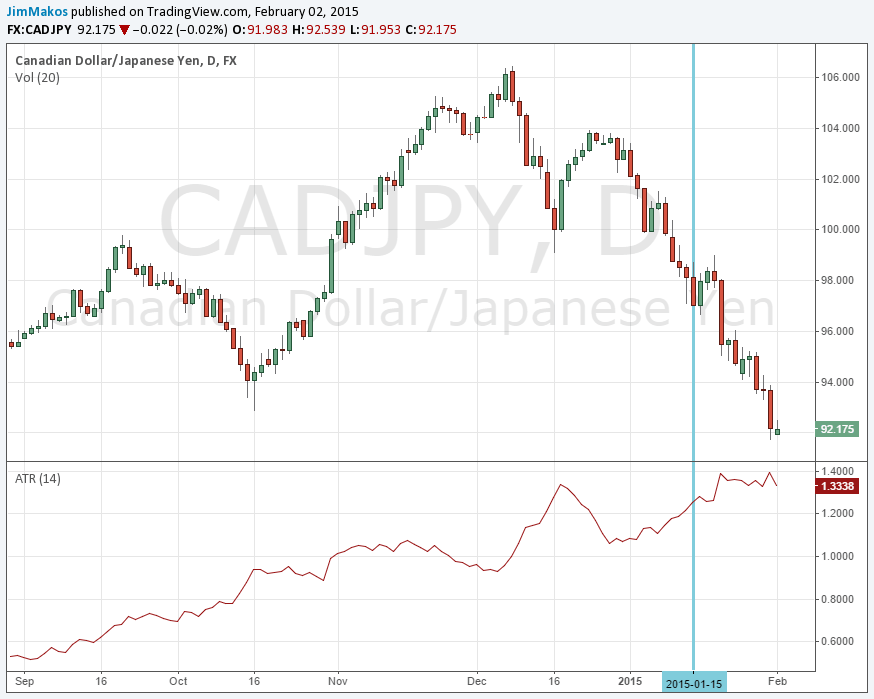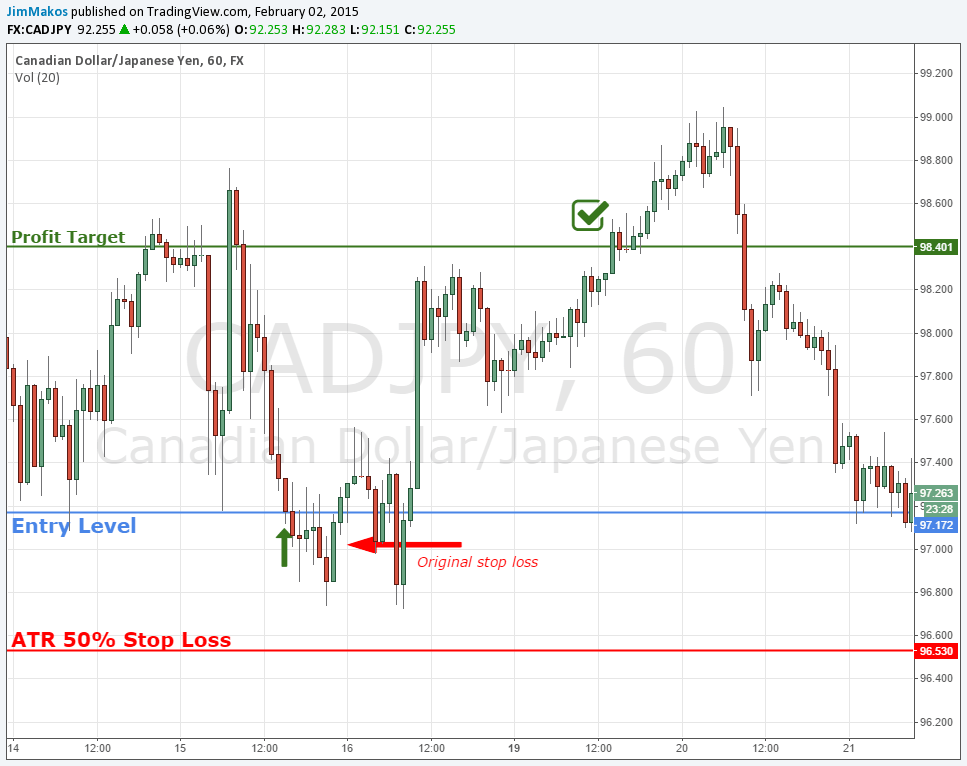One of the swing trades I did in forex last month was buying the Canadian dollar against the Japanese Yen. It was a promising trade, having a high-reward/low-risk ratio (R/R) of almost 9! Shortly after opening the position though, my stop loss was hit. Should I have used an ATR % stop method, the trade would have been successful.
I can’t think of anything worse in trading. That’s when market hits your stop loss and carries on to confirm your prediction!
The problem was that I wasn’t aware of this stop loss strategy.
And here’s how being social in the trading world helps your performance. Not to mention enriching your knowledge!
I had published my opinion on CAD/JPY at TradingView, as I usually do for most of my high R/R trades.

10 days later, TradingView notified me that my idea had received a comment! My trading idea would have been forgotten if it weren’t for another trader commenting on the chart! His comment was:
U should have used an ATR stop, it would have been a perfect trade
A perfect trade? How come? It had resulted in a loss. Was I wrong? I went back to my original chart. It turned out that, if my stop loss had been set a bit further below my entry price, the trade would indeed be a profitable one! Let me remind you that it had a Risk/Reward ratio of 9!
But what is an ATR stop?
The ATR % stop method in forex trading
Upon searching for the term at Google, Investopedia’s article came up. So, let’s see how I should have used the ATR stop method on this particular trade.
The ATR indicator helps to identify volatility over a specified period of time. A higher ATR indicates a more volatile market while a lower ATR indicates a less volatile market.
On the date of my entry (15 January), ATR was around 1.30.

I went long at 97.18 and set the stop loss at 97.04. Given I was swing trading CAD/JPY, I should have set my stop loss at 50% of the ATR according to Investopedia. Hence, I should have set the stop loss at 65 pips below the entry price, instead of 14. That would be at 96.53.
Here’s how my original trade would look like with an ATR % stop loss.

Ta-da! CAD/JPY price would have hit the profit target a week later. Sure that wouldn’t entitle me to win the Bullseye award. Yet, my trading account would welcome the profit! Of course, setting a less tight stop loss would also hurt the R/R of the trade. But that would be counter measured by the increased winning trades. I’m always after the latter, which will result in less variance to my trading capital.
So, here you go. If you find your stop loss getting hit more than expected, give the ATR stop method a go. And don’t be shy of your trading picks. Even bad trades can result in a positive way, such as you becoming a better trader via socializing.

